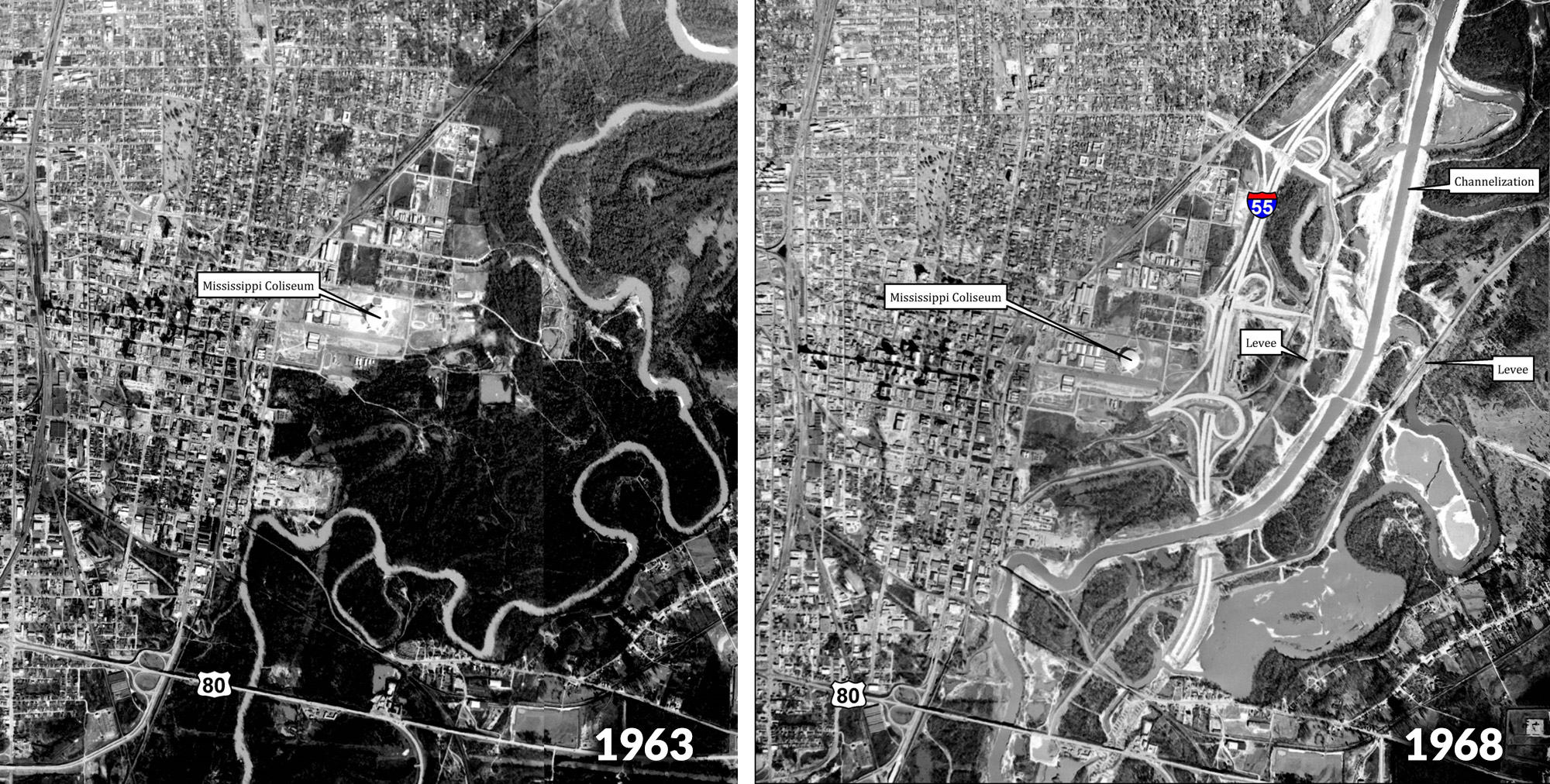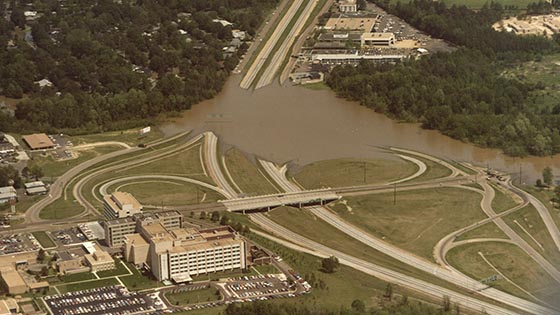History of Pearl River Flooding and Attempts to Mitigate It

The City of Jackson was founded in 1821 at the site of a trading post situated on a bluff on the west bank of the Pearl River. According to past stories, the trading post was created by a French Canadian named Louis LeFleur, which resulted in the town originally being named Lefleur’s Bluff. In 1827, there was reported shipping tonnage on the Pearl River of 750 tons, and by 1904 it rose to 19,869 tons. Reports of the Pearl River flooding at Jackson go back as far as the city’s published newspapers. Flood events in the late 19th and early 20th centuries affected mostly unpopulated areas, but downtown Jackson experienced regular flooding through the 1950s. Reports of official efforts to alter and improve the Pearl River for navigability and flood control purposes date back to at least the Civil War. In one example of such 19th-century efforts, the 1899 Federal Rivers and Harbors Act allocated $10,500 for various improvements to the Pearl River from Edinburgh south to Monticello.
The mid-20th century saw rapid population and economic growth for the eastern side of Jackson and for western Rankin County – that is, the portions of the Jackson metropolitan area bordering the Pearl River. By the 1950s, it was clear that then-existing efforts to control flooding were not sufficient to protect the increased population and investment now present in the area. The Clarion-Ledger on February 7, 1965, described the frequent flooding as “mounting a staggering cost to property and rehabilitation.”
The Rankin Hinds Flood and Drainage Control District was created in response to these issues. In the 1960s, after much local effort to obtain assistance from the federal government, the District and the Corps of Engineers engaged in the planning and construction of roughly eleven miles of levees on the Rankin County side and two miles on the Hinds County side. The levee project also channelized the winding Pearl River into a straight line between Hinds and Rankin Counties in the Jackson metropolitan area.
While the levees have certainly reduced the frequency of flooding, they are not able to prevent the tremendous human and economic cost of a major flood. This limitation was devastatingly illustrated on Easter Sunday of 1979, when the Pearl reached 43.28 feet and inundated thousands of homes and businesses, causing tremendous disruption to life along with about $500-$700 million of damage ($1.7 billion in 2018 dollars). The area of western Rankin County affected by the 1979 flood, of course, has since seen a massive increase in population and economic activity – meaning a similar flood event today would likely exact a much higher toll.
While the levees have certainly reduced the frequency of flooding, they are not able to prevent the tremendous human and economic cost of a major flood. This limitation was devastatingly illustrated on Easter Sunday of 1979, when the Pearl reached 43.28 feet and inundated thousands of homes and businesses, causing tremendous disruption to life along with about $500-$700 million of damage ($1.7 billion in 2018 dollars). The area of western Rankin County affected by the 1979 flood, of course, has since seen a massive increase in population and economic activity – meaning a similar flood event today would likely exact a much higher toll.

Just four years later, in May 1983, the Pearl yet again crested at around 39 feet and caused major flooding in Northeast Jackson. This time roughly 5,000 homes took on water, and the New York Times reported $21 million ($53 million in 2018 dollars) of damage in Jackson alone. And in 2014, the metro area narrowly missed a flood with the potential to cause even more damage than the 1979 flood when a massive rainstorm veered south, rather than north, at the last moment. In short, Jackson and Rankin County need more robust flood protection than the current levee system can provide.
